COGA Fact Sheet: Air Monitoring and Measurements
Thousands of air quality measurements have been taken near oil and natural gas sites in Colorado over the past decade, and no measurement attributable to oil and natural gas has been above EPA or Health and Human Services health guideline values, according to monitoring by the state, industry, and third parties.
Air Quality Standards
It is important to understand the difference between guideline values and standards. Guideline values are levels that carry no observable risk. For example, think of a standing on a shoreline where jellyfish are known to sometimes float 150 feet out in the water. As long as you stay on shore, there is no risk. However, once you enter the water standards may exist to help instruct practices. A standard for a person swimming 50 feet from shore might simply include a sign on the beach notifying swimmers of jellyfish, but swimming beyond 150 feet might include a recommendation for swimmers to wear a wetsuit.
When it comes to air quality, while health guideline values represent emission levels that carry no observable risk, emission standards are based on the combination of exposure (amount of time) and concentration (amount of chemical) that a person may encounter in various circumstances. The concentration of a chemical during one-hour, eight-hour, and 24-hour segments matters, and regulatory standards are based on these variations. Acceptable exposure timeframes and acceptable concentration levels are used to set standards for different populations. That is why there are different standards for the general public versus industry employees.
Employees in the field have personal monitoring devices attached to their clothing. Those monitors track exposures and concentrations, informing individuals about safe and unsafe conditions. Similarly, fixed-monitors further away at the edge of an oil and natural gas development site, or at an established setback distance, may be used to measure exposure and concentration levels for the general public. Standards are then set based on these various conditions, in order to ensure workforce and public safety.
Stages of Development
There are four stages of active oil and natural gas development. Drilling is the first stage as the wellbore and protective casings are installed thousands of feet beneath the surface. Hydraulic fracturing comes next, as fluid, sand, and a small amount of chemicals are used to open cracks within the shale formation. The third stage is called flowback, when hydraulic fracturing fluid and naturally occurring water locked within the formation (produced water) are removed. The final stage is production, which begins after infrastructure is installed to collect and transport oil and natural gas as the resource comes to the surface. While 70 percent to 80 percent of a well’s production occurs within the first three to five years, a well may produce for up to 20 to 30 years.
It's important to note that monitoring by the state, industry, and third parties over the past ten years, looking at all stages of development, has never produced emission measurements that would lead to short or long-term health impacts when adhering to Colorado setback standards.
What Do We Measure and Why?
Carbon dioxide (CO2) is the principle driver of global climate change, but methane is also a contributor, as is seen in the chart below. Colorado was the first state in the nation to enact leak detection and repair (LDAR) regulations in 2014 to reduce methane emissions. In December 2019, those rules were made more rigorous by the Air Quality Control Commission and are the toughest air regulations in the country. While policies to reduce and manage methane are important for addressing climate change, methane is non-toxic, does not produce direct health effects, and does not contribute to ozone formation.
Eleven chemicals make up roughly 98 percent of emissions that occur during oil and natural gas development:
Methane 83.9%
Ethane 5.0%
Propane 3.6%
Butane 1.8%
Pentane 0.9%
Isobutane 0.8%
Isopentane 0.7%
Propylene 0.4%
Hexane 0.3%
Ethylene 0.3%
Benzene 0.0% *
While the largest emissions from development (methane 84 percent; ethane 5 percent) are not contributors to ozone formation according to the EPA, the other nine chemicals on the list above are classified as volatile organic compounds (VOCs). When VOCs are combined with nitrogen oxides (NOx) and sunlight, they will demonstrate varying reactivity rates, and given enough time can lead to ozone formation. High levels of ozone can cause respiratory issues, particularly in sensitive populations and those with asthma. Due to these direct health impacts, Colorado has regulations in place to reduce VOC and NOx emissions from the oil and natural gas industry, as well as emissions from other contributors, such as cars, boats, lawnmowers, and even paints.
It is important to note that the chemicals listed above coexist within an oil and natural gas formation. So, efforts to reduce VOCs also reduce methane emissions, and vice versa, providing a shared benefit for our climate and our air quality. The combination of tough regulations and new technologies already have led to sizable emission reductions, which are projected to continue to fall in coming years.
*a minimal amount of benzene is released during the four stages of development, but as the only chemical from oil and natural gas development that is a known carcinogen, it is important to include on this list. Click here for more information on benzene.
Additional Resources & Information
Colorado Oil & Gas Conservation Commission (COGCC) | www.cogcc.state.co.us
Colorado Department of Public Health & Environment | www.colorado.gov/cdphe
Regional Air Quality Council (RAQC) | www.raqc.org




